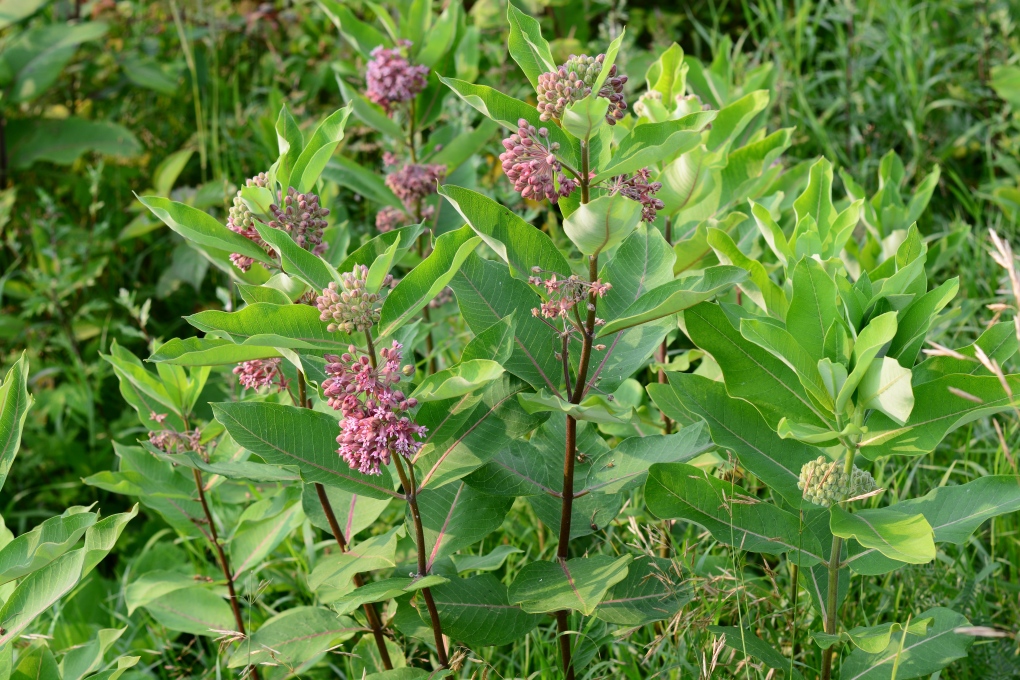The monarch butterfly population is in trouble; how 'citizen scientists' are helping the cause
If you live in Canada, chances are you’ve seen a monarch butterfly before — with its vivid orange wings, delicate black markings and bright white spots, it’s pretty difficult to miss.
The creature is a fixture of North American wilderness, feeding and breeding on milkweed plants across the continent.
But the monarch butterfly is making its way towards extinction, with experts estimating a population decline of over 80 per cent in the last 20 years.
One Montreal initiative, called Mission Monarch, is tracking this decline very closely — and "citizen scientists" are helping out.
"Mission Monarch is an international project that was launched by the [Montreal] Insectarium in collaboration with the federal government, and its goal is to identify monarch breeding hotspots," said Maxime Larrivée, director of the Montreal Insectarium and founder of the mission.
Since 2016, Mission Monarch has participated in the annual International Monarch Monitoring Blitz, when everyday nature enthusiasts across Canada, Mexico and the U.S. band together to track the monarch's breeding rates as it makes its annual migration from north to south. The monarch is the only known butterfly to make this kind of migration.
Every year, fewer and fewer monarchs are returning north in the spring, as their journey home has grown increasingly treacherous.
"Our contribution in Canada is to make sure that monarchs, when they leave Canada, [that] they leave in the best shape possible, and in [the] biggest numbers possible for their migration back to Mexico," says Larrivée.
 Credit: Jardin botanique de Montréal (Michel Sokolyk)
Credit: Jardin botanique de Montréal (Michel Sokolyk)
Milkweed is essential to the monarch butterfly's survival. It can be found all across Canada, with the exception of the northmost regions. (Jardin botanique de Montréal /Michel Sokolyk)
HOW IT WORKS
Participants in the Blitz are encouraged to venture out into the wilderness and track monarchs in each of their life stages, later sending their findings to Mission Monarch. Right now, in late July, a second generation of monarchs is forming; if you look closely enough, you might find eggs, pupae, caterpillars and butterflies all at the same time.
This year's Blitz is currently underway, starting on July 23 and ending on Aug. 1.
Larrivée said that by recruiting citizens in the project, conservation experts can gain a widespread pool of data.
"Researchers are working on identifying [...] what we call breeding hotspots, from the data collected by Mission Monarch and other other citizen projects, so that we can target and be efficient in our optimization of these conservation areas.”
Anyone can participate in the Blitz, regardless of experience. Larrivée says its the perfect excuse to get outside and explore nature in a new way.
"It’s a great activity to do with friends, family and especially, I think, for kids," said Larrivée. "It gives them this introduction to the scientific method, but also this connection to nature."
 Credit: Lillian Roy
Credit: Lillian Roy
Maxime Larrivée combs through milkweeds at the Jardin Botanique in search of monarch butterfly eggs and larvae. (CTV/Lillian Roy)
To participate in the Blitz, follow four simple steps:
- Locate and identify some milkweed. This plant is vital to the survival of the monarch, as it is the only source of nutrition for its caterpillars. The Mission Monarch website outlines the different species of milkweed in Canada and where to find them.
- Identify the monarchs, in a variety of life stages. Check the milkweed leaves for eggs, caterpillars and chrysalises (or pupae). The caterpillars are identified by their vivid yellow, black and white stripes, and the chrysalises are turquoise-green and bean-shaped, with gold spots.
- Write your observations. Participants can download a Monarch Mission field observation form, which prompts them to identify the number of milkweed observed, as well as the number of caterpillars, eggs, pupae and adults found.
- Send your data to Mission Monarch by signing up online.
A SYMBOL OF PAST AND FUTURE
The eastern monarch population has declined by over 80 per cent in the last 20 years, while the western population has dropped by 99 per cent since the 1990s, according to Montreal's Comission for Environmental Cooperation.
"Monarchs were so ubiquitous," says Larrivée. "They were in population sizes of more than a billion. And then gradually, from the late 1990s to the early 2000s, numbers started to go down."
And then, around 2012, the population hit rock bottom.
"It went down, in our estimates, to about 60 million individuals."
Larrivée says that, for anyone alive over 20 years ago, this dramatic decline is apparent from the moment you step outside.
"Monarchs were part of our environment.They were branded. If you went out in the summer, you would see this big, bright orange butterfly. And you would appreciate it, you'd share a moment with it, this connection with nature. Now, we know that something's off. We realize that it's not a part of our landscape [in the way] it used to be."
 Credit: André Sarrazin
Credit: André Sarrazin
A monarch caterpillar rests on top of a milkweed leaf. Milkweed is poisonous to many animals, but the monarch caterpillar has developed a resistance to its toxins — in fact, milkweed is the caterpillar's only source of food. (André Sarrazin)
But why is the monarch disappearing so fast?
Because of increasingly severe weather events and habitat loss, says Larrivée.
Storms, heatwaves, and freezing temperatures have made surviving migration a challenge for the butterfly, and fewer milkweeds means fewer places to lay eggs.
Larrivée says that the monarch's declining population points to a less-than-ideal future.
"Monarchs, insects in general, are what you could call a canary in the coal mine," says Larrivée. "They are the first signs that things are going really wrong."
But experts hope that, by collecting more data through projects such as the Blitz, steps can be taken to protect monarch butterflies and, by extension, their surrounding ecosystems.
"The actions that [we] will do to improve the quality of the habitat they breed on, through which they migrate, will also have very positive impacts on the rest of the biodiversity in those areas.
CTVNews.ca Top Stories

Trudeau says he could have acted faster on immigration changes, blames 'bad actors'
Prime Minister Justin Trudeau says the federal government could have acted faster on reining in immigration programs, after blaming 'bad actors' for gaming the system.
Apparent Taylor Swift ticket scam targets hundreds who claim to be out $300K
An apparent scam allegedly targeting roughly four hundred people, many of whom based out of Burlington, Ont., claim to be out approximately $300,000 in total after believing they were purchasing Taylor Swift tickets in Toronto, but never receiving them.
Biden authorizes Ukraine's use of U.S.-supplied long-range missiles for deeper strikes inside Russia
U.S. President Joe Biden has authorized Ukraine to use U.S.-supplied long-range missiles to strike deeper inside Russia, easing limitations on the weapons.
Canadian baby and toddler sleepwear recalled, risk of catching fire: Health Canada
Hundreds of organic baby- and toddler-sized rompers sold by an Ontario-based sustainable clothing company have been recalled over concerns they could catch fire and injure children, according to Health Canada.
Parliament on the road to an unprecedented confidence crisis, but there are off-ramps
If no political party is willing to say uncle, the drawn-out stalemate in the House of Commons is heading for an unprecedented situation that could amount to a tacit lack of confidence in the government, without anyone in Parliament casting a vote.
Doctors say RFK Jr.'s anti-Ozempic stance perpetuates stigma and misrepresents evidence
Robert F. Kennedy Jr. has pledged to tackle high rates of chronic diseases such as diabetes and obesity as President-elect Donald Trump's pick to lead the US Department of Health and Human Services. They’re goals that many in the public health world find themselves agreeing with — despite fearing what else the infamous anti-vaccine activist may do in the post.
Dwayne Johnson's US$200 million+ Christmas pic opens to US$34.1 million
Moviegoers were not exactly feeling the Christmas spirit this weekend, or at least what 'Red One' was offering. The big budget, star-driven action comedy with Dwayne Johnson and Chris Evans sold US$34.1 million in tickets in its first weekend in theaters, according to studio estimates Sunday. It easily topped a box office populated mostly by holdovers.
Winnipeg man charged with biting police officer during investigation
Winnipeg police have charged a man after an officer was bit during an investigation earlier this year.
Trump's Pentagon pick paid woman after sex assault allegation but denies wrongdoing, his lawyer says
Pete Hegseth, U.S. president-elect Donald Trump's pick for defense secretary, paid a woman who accused him of sexual assault to head off the threat of a baseless lawsuit, according to Hegseth's lawyer.

































